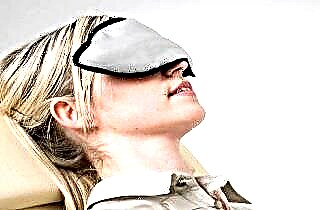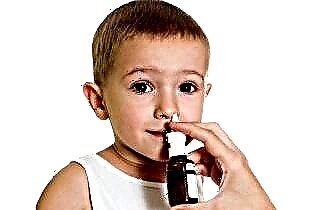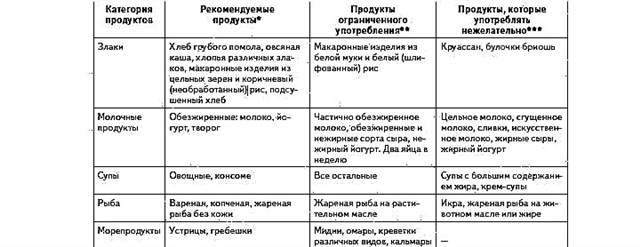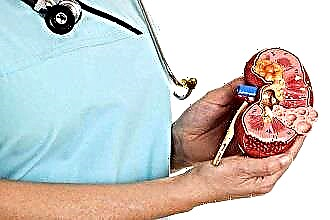Injuries to the nose are the most common injury, especially in children. This damage has a number of negative concomitant symptoms - facial swelling, bleeding. If a child has lost consciousness at the time of injury, nausea, vomiting and headaches are observed, he may have not only a bruised nose, but also a concussion, an urgent need to consult a traumatologist.
Causes
 Damage to a child's nose is a very common situation, and blows are to blame. Fidgets under three years old need close attention. The oversight of adults often causes injuries to the nasal bones in children, which have an extremely adverse effect on their health and development. Toddlers may fall, open a door or cabinet inadvertently, or play with objects unsuitable for entertainment. Babies are active and energetic, their skeletal system is not sufficiently developed, so they often fall.
Damage to a child's nose is a very common situation, and blows are to blame. Fidgets under three years old need close attention. The oversight of adults often causes injuries to the nasal bones in children, which have an extremely adverse effect on their health and development. Toddlers may fall, open a door or cabinet inadvertently, or play with objects unsuitable for entertainment. Babies are active and energetic, their skeletal system is not sufficiently developed, so they often fall.
Older children injure their nose during sports. In winter, the number of cases of referral to traumatologists increases due to weather conditions and winter leisure activities. Skiing, ice skating and ice-skating are activities that often lead to bruises and nose fractures. Injuries caused by improper handling of pointed objects are a common cause of perforating damage. Damage to the mucous membrane causes severe bleeding, provokes an infectious process in the nasal passages and paranasal sinuses, the formation of hematomas of the nasal septum. A cutting object can damage the lattice plate in the upper nasal cavity and cause fluid that regulates the nutritional processes of the brain to leak out.
If a child bumps his nose and gets a fracture, the result can be seen immediately: the baby's breathing is difficult, he cannot smell, the appearance of his face changes.
A bruised nose: symptoms and treatments
Signs of a bruise:
- The onset of acute pain immediately after injury, which increases with pressure.
- The appearance of edema on the outer sides of the child's nose.
- Intense and prolonged bleeding due to a violation of the integrity of the mucous membrane of the internal septa of the nasal passages.
- Complication of breathing as a result of mucosal edema.
- Lachrymation for several hours in a row.
- Bruising in the area of damage and around the eyes due to the fragility of blood vessels.
All of these signs persist for several days and gradually disappear. A bruised nose can be accompanied by a concussion. Fainting or dizziness after injury, intoxication, severe headache, and sometimes bruising in one of the eyes are symptoms of a concussion.
A bruised nose deforms the skin. It is necessary to determine that the child has only the nose affected, and there are no other injuries. To do this, the traumatologist will write out a referral for an x-ray of the bones of the skull and nose, examine the injury and check the damage by touch. Based on the research results, appropriate therapy will be prescribed.
First aid
 The child needs to be calmed and seated, active sudden movements are strictly prohibited.
The child needs to be calmed and seated, active sudden movements are strictly prohibited.- For nosebleeds, tilt the child's head forward and ask him to breathe through his mouth. If there is no bleeding, the head should be tilted back to help reduce the swelling and ease the pain a little.
- Wrap ice or any food from the freezer that is at hand in a cloth and apply the compress to the bridge of the nose and the back of the head for about a quarter of an hour. After that, you should take a break for 60 minutes.
- If the blood flow is very strong, it is necessary to make a turunda from cotton wool or bandage, having previously moistened it in hydrogen peroxide. It is worth leaving the turunda in the nose for at least half an hour, after which the tampon should be changed to a fresh one before the doctor's examination.
- If there is an external injury at the site of the injury, wash it with peroxide and cover it with a plaster on top. You can apply a special disinfecting swab to the wound without additional treatment.
- In case of severe pain, the child needs to take a general anesthetic medicine (baralgin, analgin or paracetamol).
Therapy
In the absence of serious damage, your doctor will recommend the following treatment:
- Make ice compresses for a quarter of an hour with a break of two hours.
 Use troxevasin or heparin ointment to relieve swelling and stop blood.
Use troxevasin or heparin ointment to relieve swelling and stop blood.- Treat the wound with antiseptic agents. If an inflammatory microbial process has begun in the damaged area, you will be prescribed an antibiotic ointment.
- Use analgesics for acute pain.
- Instill vasoconstrictor drops with swelling and difficult breathing (naphthyzin, sodium sulfacil).
- A few days later, physiotherapy procedures may be prescribed by the surgeon. They are designed to reduce swelling and pain, normalize blood circulation and restore respiratory function.
Blood can accumulate in the inside of the nasal passage, which is a positive factor for the multiplication of microbes and leads to inflammation. Signs of hematoma infection are fever, intoxication, pain, and a feeling of bloating in the nose. Puncture will help to stop the inflammatory process.
With a weakened state and severe pain after injury, the patient needs bed rest.
Nose fracture: diagnosis and treatment
All of the above signs of a bruise are similar to those of a broken nose. Only with the help of medical hardware diagnostics can a correct diagnosis be established. An urgent appeal to a traumatologist will help not only prevent the suffering of the child and restore the normal appearance of the face, but also avoid improper bone fusion. With asymmetry of the nose, the intervention of surgeons will be required, therefore self-medication is strictly prohibited. Timely qualified assistance may help to restore the damaged area manually.
The otolaryngologist will perform an external examination, write out a referral for an x-ray of the cartilage and bones of the face, and prescribe a procedure for examining the inner surface of the nose from different angles (endoscopy). When establishing an accurate diagnosis, it may be necessary to consult an ophthalmologist and a neurologist. You will also need to pass a number of laboratory tests. An external examination will help establish the nature of the damage, note the degree of hematomas, swelling and curvature of the nasal septum. X-rays will give information about a possible fracture of bones and cartilage. All these data will make it possible to prescribe the correct treatment.
 If the diagnosis was made late or medical errors were made in the diagnosis and treatment, the injured nose will succumb to asymmetry under the influence of the displacement of the nasal septum. This can ruin the appearance of the face, cause breathing difficulties and the feeling of odors. In such a situation, it will be necessary to restore the cartilage and the location of the bones with the help of plastic surgeons.
If the diagnosis was made late or medical errors were made in the diagnosis and treatment, the injured nose will succumb to asymmetry under the influence of the displacement of the nasal septum. This can ruin the appearance of the face, cause breathing difficulties and the feeling of odors. In such a situation, it will be necessary to restore the cartilage and the location of the bones with the help of plastic surgeons.
To prevent the child from bumping, it is extremely important to remove blunt objects from the toddler's play area. For these purposes, the door handles tie or close the doors very tightly so that the fidget cannot open them on his own and get a nose bruise. Older children need to be explained how to communicate correctly with peers in order to avoid fights, during which the face most often suffers. Sports guys who attend judo, boxing, karate sections need to be instructed about all kinds of safety rules.

 The child needs to be calmed and seated, active sudden movements are strictly prohibited.
The child needs to be calmed and seated, active sudden movements are strictly prohibited. Use troxevasin or heparin ointment to relieve swelling and stop blood.
Use troxevasin or heparin ointment to relieve swelling and stop blood.

